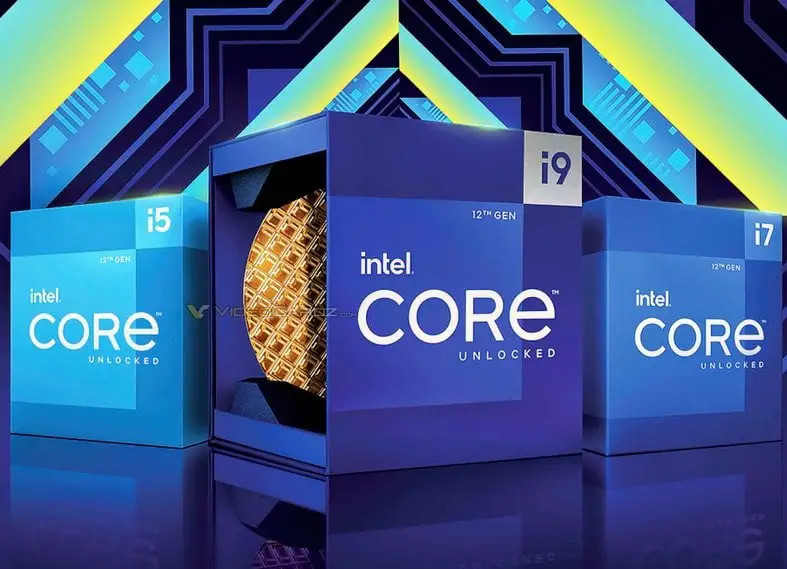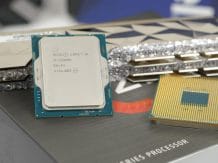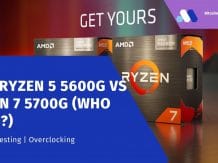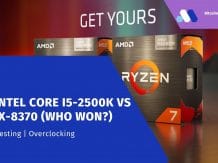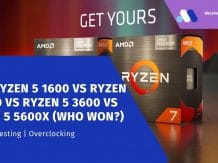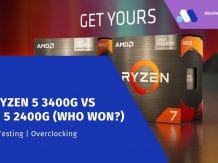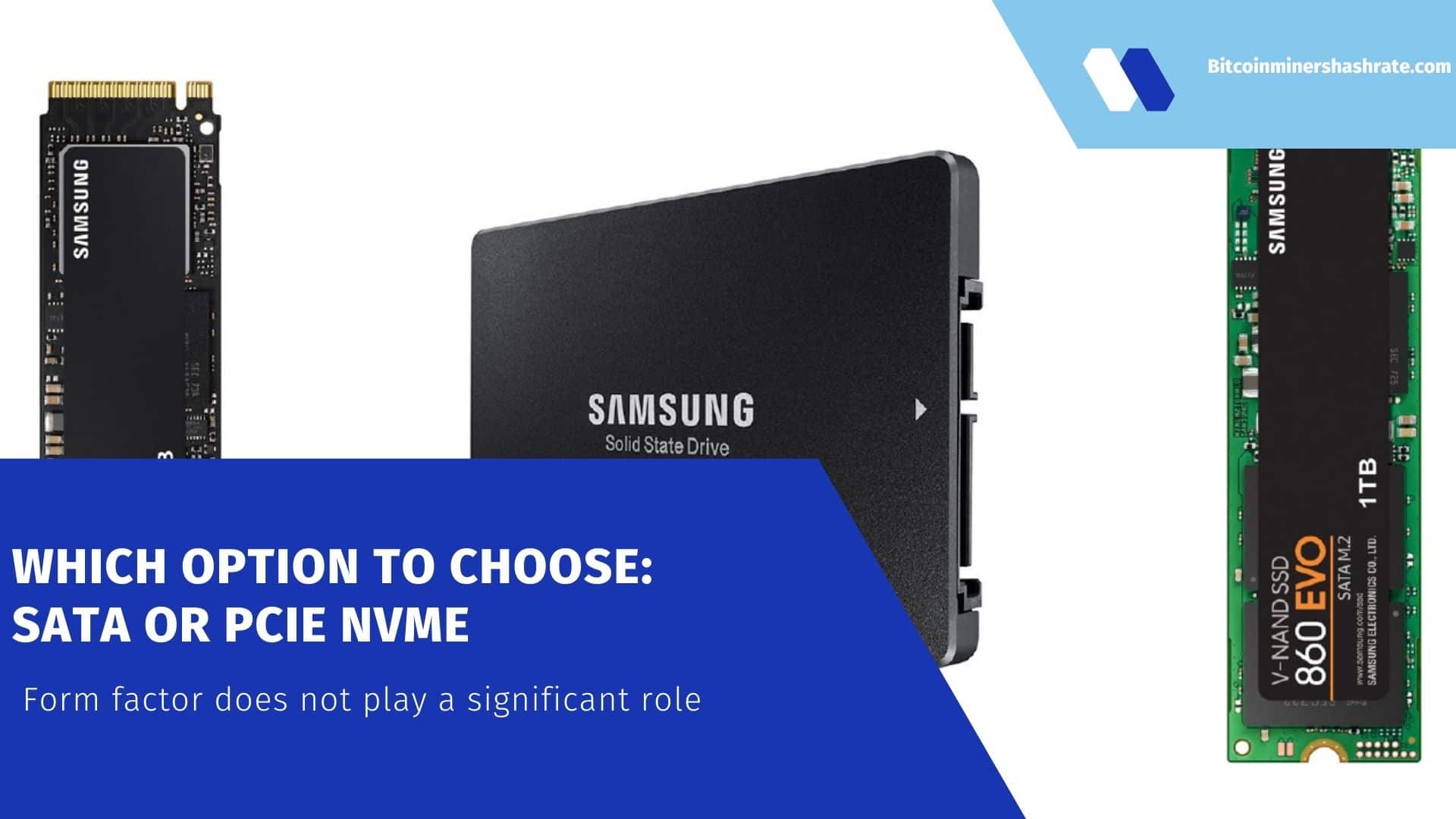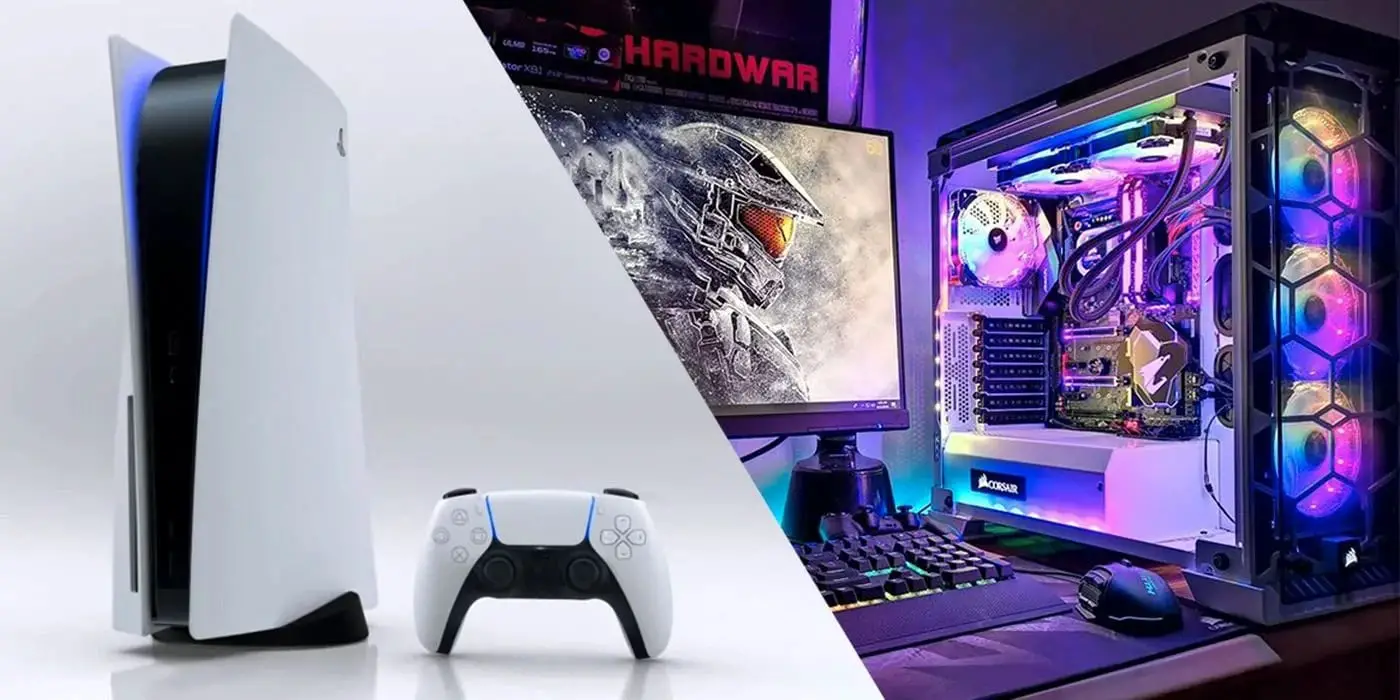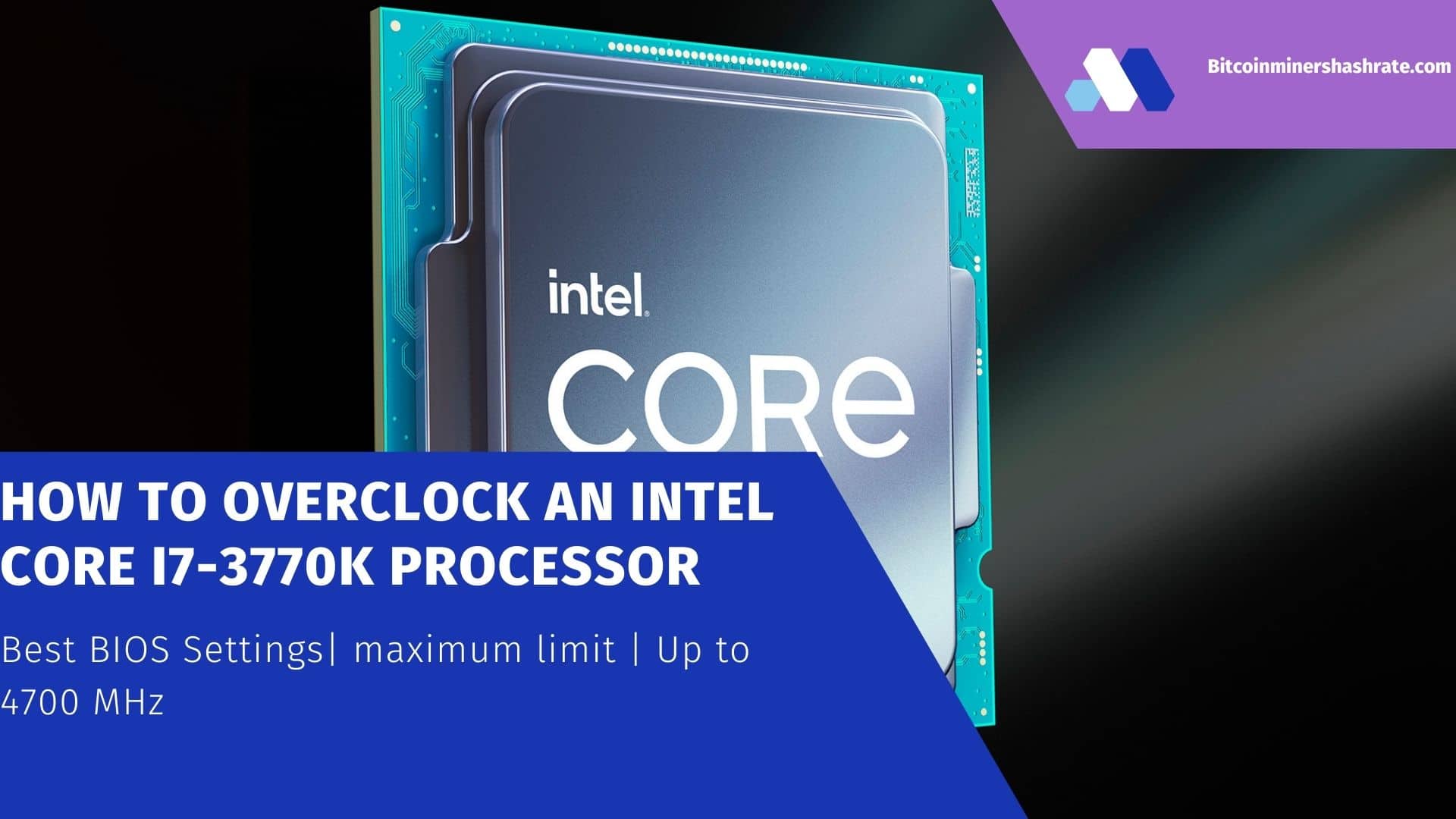Testing the Intel Core i5-11600K and Core i9-11900K processors in games – About half a year has passed since the spring gaming testing of Intel 11th generation processors, and we are returning to the topic of gaming performance once again. It just so happened that after some … let’s say, a hitch with the development of technical processes, Intel was able to release the second generation of its desktop CPUs – in 2021 alone!
And if even with the previous generation of processors they at least caught up with a competitor in terms of performance in games, then with the release of the 12th generation they should have definitely bypassed AMD Ryzen processors. Or not? Intel has been clearly lagging behind its main competitor in terms of process technology for several years, and now they have finally switched to the Intel 7 process technology, formerly known as 10 nm and approximately the same parameters as 7 nm process technologies from other manufacturers. This alone could bring a decent improvement in performance and energy efficiency, but there are much more changes in the 12th generation.
In our past research, we have concluded that 11th Gen Intel Core processors are roughly on par with AMD Ryzen processors in terms of gaming performance, with more cores, but older Intel solutions have higher clock speeds, and changes in microarchitecture allowed to increase the speed of execution of instructions per cycle. And on average, Intel and AMD processors in games at that time were very close, given the sufficiency of eight computing cores for games and the close single-threaded performance of AMD and Intel solutions.
But in the fall, a new, 12th generation of Intel processors came out, which increased competition in the CPU market. The new chips are clearly better than their predecessors, they received microarchitectural improvements, switched to a more advanced technical process, and most importantly, they increased the number of cores, closing the gap with AMD in this parameter as well. We talked about doubling the number of computing cores and their hybrid nature in the relevant materials and we will not repeat all the details, but here it remains to add that the 12th generation of Intel processors also supports DDR5 and PCI-E 5.0 memory for the first time.
We will not pay too much attention to these improvements specifically, since, according to numerous studies, the use of DDR5 does not yet improve games, because DDR4 is in its prime, and the frequency potential of a new type of memory has not yet been revealed. In principle, there are not too many tasks that are critical to memory bandwidth, and games sometimes belong to them, but so far there is no sense in using DDR5, although its frequency reaches 5200-6000 MHz. And yet, the mere fact that the very first available DDR5 modules with noticeably increased latencies keep up with the best DDR4 in games is already an achievement. Support for PCI-E 5.0 affects our tests even less. More precisely, it does not affect at all. There are simply no drives and GPUs on the market that support this version, so this advantage remains potential for now.
Of all the changes in the 12th generation of Intel processors, we are most interested in microarchitectural improvements (resulting in greater performance per core, which is very important in games), as well as an increase in the number of these same cores and their hybrid nature. But again, we will not analyze all this from the point of view of theory for a long time, today we are mainly interested in practice. And if everything is clear with an increase in the performance of cores per cycle, this always has a positive effect on gaming performance, then the simultaneous presence of productive and efficient cores in fresh CPUs is new for us, and here we need to understand a little.
As you know, 12th generation processors contain two types of computing cores: large productive and small efficient ones. If we talk very briefly about the difference between them, then efficient ones are much simpler than productive ones, they do not support the execution of two threads on one core, but they take up noticeably less space on the chip. Efficient cores are included in the CPU in blocks of four, there can be 4, 8 or 12 of them in a chip. Different cores also differ in clock frequencies: efficient ones operate only at frequencies of the order of 3+ GHz, and productive ones overclock to 5+ GHz.
Accordingly, energy-efficient cores perform various small tasks, background loads, and productive ones are engaged in the most important threads. The distribution of workloads across the cores is handled by a special hardware unit – Intel Thread Director, which works better in Windows 11. It is clear that this can be useful in case of hybrid loads like simultaneous gaming and process streaming, when some of the less important threads are transferred to efficient cores, which frees up productive for the main threads of the game. And although some of the secondary threads of a game application (sound processing, animation rendering, etc.) may well run on efficient cores, they are unlikely to significantly improve performance in games. Except for cases when some relatively resource-intensive tasks are performed in the background, which may also be in demand,
The main thing for us now is that the hybrid architecture of Intel’s 12th generation processors has made it possible to increase the number of simultaneously processed cores and threads almost to the level of competing processors (the top CPU model of AMD still retains the superiority in this parameter), and this can have a positive effect on a series of tests in which the 11th generation performed less reliably compared to AMD Ryzen 9. Especially since home PCs are used not only for games, but also for other applications that require the simultaneous execution of several resources. -intensive threads, and in such cases, additional efficient cores may be in higher demand, and AMD’s advantage will be reduced.
But do not forget that games still rarely use more than 8-12 threads effectively, and even the most modern game projects often need quad-core processors with multi-threading support, and six-core ones for sure. In games, it is often the maximum performance of individual cores that is more important, and not their number at all, and most often it is precisely this that games run into. On the other hand, a low core count can cause annoying stuttering and framerate drops, which is the worst part. That is, the right balance is important, today these are 8 fast computing cores operating at a frequency of about 5 GHz.
Test benches and test conditions
- Computer based on 12th generation Intel processors:
- Computer based on 11th generation Intel processors:
- Computer based on AMD Ryzen 5000 processors :
General accessories:
In contrast to our previous comparison of gaming CPU performance, which included the 11th generation of Intel, we decided to replace the highest performing Nvidia GeForce RTX 3090 graphics card to date with AMD’s Radeon RX 6800 XT. This replacement seems strange only at first glance. It would seem that it can lead to an increase in the dependence of results on the power of the GPU instead of the CPU. However, the difference between these top graphics solutions in terms of power is not so great, but at low resolutions AMD driver optimization is usually better, and in Full HD the frame rate is definitely higher, especially in modern games using DirectX 12. This is precisely what justifies the use of an AMD graphics card, seems to be a little less powerful.
Everything else is similar to the spring playtest. Today we are comparing a couple of new 12th generation Intel processors with similar CPU models from the previous generation, and also added a couple of AMD processors to the study, which are competitors of new products. For tests of 11th and 12th generation Intel processors, I had to use different motherboards from Asus and MSI, since the processor socket has also changed with the new generation of CPUs. Well, at the same time, we decided to see what DDR5 memory would give: we used, albeit not the fastest modules, but still operating at a frequency of 5200 MHz.
AMD processors were tested on an Asus board based on the top AMD X570 chipset. In addition, we had 16 GB of fast DDR4-3600 memory, a high-performance NVMe drive, a fairly powerful power supply and two liquid cooling systems, which are quite enough even for the top Core i9-11900K and Core i9-12900K models. By the way, don’t let the difference in RAM confuse you: increasing it from 16 to 32 GB in games does not provide any performance advantage at all.
12th and 11th generation Intel processors (in parentheses are the number of cores and threads, as well as clock speeds):
- Core i9-12900K (8P+8E/24T; 3,2—5,2 ГГц)
- Core i5-12600K (6P+4E/16T; 3,7—4,9 ГГц)
- Core i9-11900K (8C/16T; 3,5—5,3 ГГц)
- Core i5-11600K (6C/12T; 3,9—4,9 ГГц)
In terms of price and positioning, you need to compare the new Core i9-12900K with the Core i9-11900K, the same with a pair of Core i5-12600K and Core i5-11600K. The increased number of cores in the new generation immediately attracts attention – precisely due to efficient cores. In fact, 8 and 4 small ones were added to the large 8 and 6 cores. The frequencies are given for productive cores, and for the new generation of CPUs they have become somewhat lower, which can affect games. But we were promised an increase in performance per clock, so everything should be in order.
All Intel processors were tested with default BIOS settings, only the use of the XMP profile for RAM was set, and Intel Adaptive Boost and Thermal Velocity Boost technologies were activated, which should provide the highest possible frequency during testing.
AMD processors (the number of cores and threads, as well as clock speeds are indicated in brackets):
- Ryzen 9 5900X (12C/24T; 3.7-4.8GHz)
- Ryzen 5 5600X (6C/12T; 3.7-4.6GHz)
Let’s make a reservation right away that we did not take the top-end Ryzen 9 5950X, and there is a reason for this. In games, it just doesn’t offer any better performance than the Ryzen 9 5900X, and so the available CPU variant will be enough even to compare top models if it’s just about games. And for this test, we put up a processor with 12 identical cores and 24 threads – the Ryzen 9 5900X – against the 24-thread Core i9-12900K model. And as a competitor to the Core i5-12600K, the six-core Ryzen 5 5600X came up, although they do not match either in the total number of cores or in threads. But the names of the pairs 12900K and 5900X, as well as 12600K and 5600X, seem to hint to us that we did everything right.
Again, for gaming testing of 12th generation Intel processors, we took the almost top model of today’s AMD Radeon RX 6800 XT video card , which is especially good at low resolutions and will not limit performance too much. The choice of testing modes themselves is the same: the main one will be the most common resolution of 1920×1080 at medium quality settings, which should show a decent return on powerful modern CPUs, and the second option will be more plausible gaming conditions: a resolution of 2560×1440 at ultra settings quality. The second mode is already very limited by the performance of the video card, and in it we are unlikely to see a big difference between different CPUs, but in such conditions people usually play.
Performance Testing
In order to fully appreciate the difference in performance of the processor models we have chosen, we tested them in a dozen relatively new games of various genres that have built-in testing capabilities. We consider the use of built-in benchmarks to be very useful, if not even mandatory, since with a small difference in performance, the measurement accuracy and repeatability of the results must be ensured as much as possible.
In addition to the average frame rates, we also provide other indicators if they are calculated and displayed by the built-in tests. This is the minimum FPS and/or 1% low – the average frame rate of the worst 1% frames in the test sequence. They are useful for tracking down rare instances of performance degradation causing a lack of comfort and smoothness that can occur when there is a shortage of compute cores or the performance of each of them.
Assassin’s Creed Valhalla
We previously used Assassin’s Creed Odyssey and have now replaced it with a newer game from the same popular series. It was hoped that Valhalla would make higher demands on the power of not only the GPU, but also the CPU. But with the most powerful processors on the market, even at a relatively low (but at the same time – the most common, do not forget) Full HD resolution, the performance in this game is almost not limited by the power of the central processors, and therefore the frame rate is much more limited by the power graphics accelerators.
| Avg | 1% low | Min | |
|---|---|---|---|
| Core i9-12900K | 198 | 149 | 72 |
| Core i5-12600K | 195 | 147 | 67 |
| Core i9-11900K | 197 | 148 | 70 |
| Core i5-11600K | 196 | 146 | 66 |
| Ryzen 9 5900X | 197 | 147 | 68 |
| Ryzen 5 5600X | 195 | 146 | 66 |
Actually, this is what happened: with a sufficient number of processing cores (from six or more) and their relatively high performance, the difference between all the tested CPU models in this game turned out to be very small. The scatter of results is minimal, all Intel processors turned out to be approximately at the level of AMD CPUs. Absolutely all Intel and AMD processors coped with the task of providing at least 60 FPS, and the average frame rate was always close to 200 FPS.
Six-core processors are almost on par with CPUs with more cores, so this number is enough for the game and it does not benefit from additional cores. Unless it is quite small and in terms of the minimum frame rate – instead of 66 FPS, the best representative from the new Intel line got 72 FPS. The Core i5-12600K here is at the level of similar models of previous generations and is inferior to the Ryzen 9 quite a bit. This is nice for new processors. As the load on the graphics card increases, the difference decreases even more:
| Avg | 1% low | Min | |
|---|---|---|---|
| Core i9-12900K | 115 | 84 | 48 |
| Core i5-12600K | 112 | 83 | 46 |
| Core i9-11900K | 114 | 82 | 47 |
| Core i5-11600K | 112 | 80 | 46 |
| Ryzen 9 5900X | 114 | 81 | 48 |
| Ryzen 5 5600X | 113 | 80 | 47 |
But no, a small difference still remains, although it noticeably decreased in more difficult conditions for the GPU, when the speed of calculations on processor cores does not particularly limit the overall performance. Six processing cores are still enough, six-core models are quite a bit inferior to models with a larger number of cores.
In terms of average frame rate, all CPUs provided more than 100 FPS, but the minimum frequency fell below 60 FPS, although playing at 46-48 FPS will still be quite pleasant. But still, none of the tested CPUs provided maximum smoothness with 60 FPS, although it was the new Intel Core i9-12900K processor that performed a little better than the others, and the Core i5-12600K lagged behind it quite a bit.
Godfall
This is a relatively recent game that can seriously load the GPU, but it also imposes certain requirements on the CPU, especially in conditions of medium quality settings and Full HD resolution. However, the frame rate at the same time turns out to be very high, and there is a significant difference only between the Core i5-11600K and everyone else. Unfortunately, the built-in benchmark in this game does not give the minimum FPS, so we limited ourselves to the average.
| Avg | |
|---|---|
| Core i9-12900K | 271 |
| Core i5-12600K | 265 |
| Core i9-11900K | 262 |
| Core i5-11600K | 248 |
| Ryzen 9 5900X | 267 |
| Ryzen 5 5600X | 259 |
Unlike previous tests with the GeForce RTX 3090 graphics card, the AMD graphics accelerator allowed the processors to reveal their full potential, and there is a difference between them. Six-core models here are clearly worse than models with a larger number of cores, but the Core i5-12600K with additional efficient cores performs at the level of the top eight-core model of the previous generation – Core i9-11900K. The best was the new Intel processor of the upper price range, it is clearly ahead of other models of this company.
If we compare Intel and AMD processors, then the latter are strong in this game, and it’s not about the large number of Ryzen 9 5900X cores. The six-core Ryzen 5 5600X is also good and almost caught up with the Core i9-11900K from the previous generation of competitor processors, but when compared to the new Core i5-12600K processor, the new Intel is ahead of the Ryzen 5, almost reaching the Ryzen 9! That’s what the architectural improvements of the 12th generation mean. But the results of this game in higher resolution at maximum settings are unlikely to make much sense, we expect the emphasis on GPU power:
| Avg | |
|---|---|
| Core i9-12900K | 131 |
| Core i5-12600K | 130 |
| Core i9-11900K | 129 |
| Core i5-11600K | 126 |
| Ryzen 9 5900X | 130 |
| Ryzen 5 5600X | 128 |
Almost as we expected, in such difficult conditions of increased resolution and complicated graphics, the difference between all the variants of Intel and AMD CPUs considered in this game is small, but it is still there. The six-core processors, Ryzen 5 and the old Intel model, clearly stood out, both of them slightly inferior to the rest. But the new Core i5-12600K showed itself perfectly – at the level of the Ryzen 9 5900X, which can be considered an excellent result. The Core i9-12900K is a little faster, but just a little, because plus 1 FPS on average is not much.
F1 2021
Codemasters games under the official Formula 1 license are released annually, they do not change too much from year to year from a graphical point of view, but for some time now they have full support for DirectX 12 and even ray tracing (however, it does not excite us within the framework of this material). ). This is also why these games are able to use multi-threading well, which usually helps to get the maximum result from the most powerful processors. We used the Monaco race, cockpit view and rain conditions for testing.
| Avg | Min | |
|---|---|---|
| Core i9-12900K | 395 | 304 |
| Core i5-12600K | 311 | 238 |
| Core i9-11900K | 298 | 223 |
| Core i5-11600K | 255 | 199 |
| Ryzen 9 5900X | 356 | 261 |
| Ryzen 5 5600X | 297 | 230 |
This is a great example of a game where the difference in CPU speed is clear, and the obvious emphasis on GPU power at Full HD and medium quality settings has become less, as we use the top AMD graphics card, which is more efficient than Nvidia counterparts at low resolutions. Here you can clearly see the difference between the tested processors of different power, although the frame rate for all solutions is in any case very high. A stable 240 FPS and above can come in handy in online games, and in this case, all processors coped with the task.
Both Core and Ryzen are capable of providing high performance in this game, but it is very interesting that it was the previous generation of Intel processors that turned out to be very weak here, losing to AMD counterparts and Intel’s new products. In the 12th generation, they seriously improved single-threaded performance, and even added efficient cores that can perform part of the secondary computing threads that this game has. As a result, the 12900K became the best in this test, well ahead of the Ryzen 9, while the 12600K performed very well against the background of the roughly similar Ryzen 5 in terms of positioning, slightly ahead of the competitor.
| Avg | Min | |
|---|---|---|
| Core i9-12900K | 241 | 216 |
| Core i5-12600K | 239 | 215 |
| Core i9-11900K | 191 | 160 |
| Core i5-11600K | 182 | 153 |
| Ryzen 9 5900X | 220 | 189 |
| Ryzen 5 5600X | 212 | 184 |
Even at a higher resolution, the difference between the compared CPUs in this game remained. True, ray tracing was turned off completely in our test so as not to increase the load on the GPU, although the Ultra High profile turns it on by default. With tracing, we would definitely run into the capabilities of the video card, but we realized that for a resolution of 2560 × 1440 at ultra-high settings in this game, any of the presented CPUs will be enough, since the frame rate is quite high.
Processors of the Ryzen and Core lines in this game showed extremely dense results, but in pairs – separately AMD, separately Intel 11th generation and separately 12th, the most productive. Yes, there is practically no difference between CPUs with a different number of cores, but the dependence on single-threaded performance remains. And so it was the 12th generation of Intel processors that became the best, and the Core i5-12600K even outperformed the more expensive Ryzen 9 processor. An excellent result for Intel.
Dirt 5
Another racing game from Codemasters in our tests. It is somewhat better than the F1 series, which varies little from year to year in terms of graphics, it also has full support for DirectX 12 and the use of demanding ray tracing, which, however, we also did not include in these tests in order not to emphasis in the GPU is more prominent. Again, the company’s game engines make good use of multithreading, which should help you get the most out of your test CPUs.
| Avg | 1% low | Min | |
|---|---|---|---|
| Core i9-12900K | 242 | 223 | 211 |
| Core i5-12600K | 237 | 217 | 192 |
| Core i9-11900K | 236 | 213 | 180 |
| Core i5-11600K | 229 | 198 | 157 |
| Ryzen 9 5900X | 240 | 214 | 184 |
| Ryzen 5 5600X | 230 | 201 | 172 |
Alas, this game is clearly more dependent on GPU power even at Full HD and medium quality settings: there is a difference between the tested processors, but it is very small. The average frame rate for all solutions is very high, over 200 FPS on average, but it is important to note that the Core i5-11600K from the previous generation lost to the rest in terms of the minimum frame rate, which is very important for comfort.
However, absolutely all Core and Ryzen processors are capable of providing comfortable performance, even the minimum 157 FPS of the 11600K is very playable. The new Core i5-12600K has pulled itself up to more powerful CPUs, and is almost as good as the top Ryzen 9 5900X and Core i9-12900K processors. Although the latter turned out to be faster, becoming the clear leader of the comparison. The improved single-threaded performance and the increase in the number of cores have had a positive effect on this particular game. But we are unlikely to be impressed by the difference in more difficult conditions for the video subsystem:
| Avg | 1% low | Min | |
|---|---|---|---|
| Core i9-12900K | 141 | 127 | 120 |
| Core i5-12600K | 139 | 125 | 110 |
| Core i9-11900K | 139 | 123 | 115 |
| Core i5-11600K | 138 | 124 | 109 |
| Ryzen 9 5900X | 137 | 122 | 110 |
| Ryzen 5 5600X | 135 | 121 | 108 |
Even in the harder test mode for the GPU, when the rendering speed almost always has to be limited by the power of the video card, we see a slight advantage for multi-core processors. Yes, the processors showed tight results with a little variation, but this mainly concerns the average frame rate. But according to the minimum indicator, two top-end Intel processors are very good – their 115-120 FPS, albeit not much, is still better than 110 FPS for the competing Ryzen 9 model.
It is clear that in such conditions the rendering speed rests mainly on the power of the GPU, and for a resolution of 2560 × 1440 at ultra-high settings in this game, any of the CPUs presented in the test will be enough, and even much less powerful processors can easily cope with the task of ensuring smoothness and comfort. . And we didn’t turn on ray tracing yet, with it there would be no difference between the processors at all.
Hitman 3
In the updated methodology, we have added the latest entry in the Hitman game series. Hitman 3 has two built-in benchmarks, of which we chose Dubai (the second one is more suitable for CPU tests, but it is too far from typical gameplay). The game supports DirectX 12 and can take advantage of the capabilities of modern multi-core processors. It doesn’t put too much work on the GPU, and the rendering speed should be affected by the power of multi-core CPUs, at least in Full HD:
| Avg | Min | |
|---|---|---|
| Core i9-12900K | 336 | 43 |
| Core i5-12600K | 301 | 42 |
| Core i9-11900K | 252 | 41 |
| Core i5-11600K | 231 | 37 |
| Ryzen 9 5900X | 307 | 43 |
| Ryzen 5 5600X | 274 | 38 |
The use of a powerful AMD graphics card in the tests allowed us to achieve an increase in frame rates compared to the GeForce RTX 3090 used last time. As a result, the speed was not always limited by the video card, so more powerful CPU models have a clear advantage. Alas, the minimum FPS in this test is useless, since the frame rate drops on all systems clearly below 60 FPS and this happens at the moments of loading resources between test scenes. The average frame rate of 200-300 FPS gives you ultra-high gaming comfort, and all processors cope with ensuring smoothness.
What was most surprising was the relatively low result of the 11th generation Intel processors. For some reason, they clearly lost both to the new 12th generation and to the competitor’s processors. But for us today it is more interesting to compare the new Intel CPUs with AMD processors. The new Core i5-12600K is noticeably more powerful than its predecessor, almost taking out the Ryzen 9 5900X! And the fastest in the test was the Core i9-12900K, decently ahead of the Ryzen 9, although we noted earlier that AMD processors have an advantage in this game. We also note a clear lag behind six-core CPUs from more powerful CPUs with more cores, and the new Core i5-12600K again clearly benefits from additional cores. Let’s see what’s left of him in hard mode:
| Avg | Min | |
|---|---|---|
| Core i9-12900K | 221 | 38 |
| Core i5-12600K | 218 | 35 |
| Core i9-11900K | 213 | 36 |
| Core i5-11600K | 205 | 34 |
| Ryzen 9 5900X | 218 | 35 |
| Ryzen 5 5600X | 209 | 34 |
Interestingly, under more difficult conditions for the GPU, the difference between the processor models still remains, although it has noticeably decreased. The rendering speed in this game and under these conditions is not entirely limited solely by the capabilities of the GPU. We do not look at the useless minimum frame rate, but the average 205-221 FPS for all processors is quite sufficient for gaming comfort.
Six-cores are again slightly behind: Core i5-11600K and Ryzen 5. But the new model of the same level in the form of Core i5-12600K again performed at the level of Ryzen 9! What can we say about the top Core i9, which is even faster. But since the difference between all models is small, we can only repeat once again that when playing at relatively high resolutions and with high rendering quality, it is quite possible to get by with far from the most expensive CPU. And the Core i5-12600K in this case seems to us a very good offer.
Horizon Zero Dawn
This is a relatively new game that came to us on the PC from the world of consoles. We are not surprised that it can work better on AMD solutions, since it is the architecture of their development that is used in console chips. The game uses an advanced D3D12 renderer, which allows test processors to open up, but it still depends much more on the power of the video card.
| Avg | 1% low | |
|---|---|---|
| Core i9-12900K | 205 | 145 |
| Core i5-12600K | 197 | 137 |
| Core i9-11900K | 176 | 118 |
| Core i5-11600K | 161 | 109 |
| Ryzen 9 5900X | 202 | 138 |
| Ryzen 5 5600X | 193 | 130 |
The Original settings are similar to the console ones and should not impose super-demands on the GPU, but still the game mainly rests on the 3D accelerator, and does not depend so much on the power of the processors. But with the Radeon RX 6800 XT it’s better than in past tests. Interestingly, the processors from the previous 11th generation are again noticeably behind in both average and minimum frame rates from both the Ryzen pair and the new 12th generation processors. Yes, 100+ FPS is enough for this game, but we are comparing different processors, and the same Core i5-11600K is clearly lagging behind here.
But its fresh replacement in the form of the Core i5-12600K performed noticeably better, outperforming the top-end Core i9 from the previous generation and almost catching up with the Ryzen 9 5900X – once again! But AMD solutions in this game usually looked preferable. It’s also nice that the Core i9-12900K is once again the best, as we expected from the seriously improved CPU of the new line. But don’t forget that all CPUs presented will provide comfort to owners of monitors with a refresh rate of 100 Hz and higher, so our comparison is more theoretical. Consider heavier maximum graphics settings:
| Avg | 1% low | |
|---|---|---|
| Core i9-12900K | 153 | 115 |
| Core i5-12600K | 152 | 113 |
| Core i9-11900K | 141 | 101 |
| Core i5-11600K | 138 | 97 |
| Ryzen 9 5900X | 152 | 112 |
| Ryzen 5 5600X | 149 | 107 |
We were wrong in thinking that with a noticeably higher load on the GPU after increasing the resolution and graphics quality, the difference between the CPU models will disappear altogether. It still exists, although it is no longer so great both in terms of the minimum and the average. Again, the 11th generation of Intel processors is clearly behind, and their new CPUs are the undisputed leaders. The Core i5-11600K is lagging behind, AMD’s hexa-core is even slightly better than Intel’s previous 11th generation top model, but the Core i5-12600K is faster than both. Moreover, the latter was again at the level of Ryzen 9, which we once again recorded.
Red Dead Redemption 2
Another game ported from consoles and using modern graphics APIs: Vulkan and DirectX 12. Accordingly, one can expect from it both the efficient use of a large number of cores in older processor models, and the possible advantage of AMD solutions, since the computing cores of this company are used in console chips. But alas, everything is crossed out by a heavy load on the graphics chip even in the simplest test conditions.
| Avg | Min | |
|---|---|---|
| Core i9-12900K | 131 | 88 |
| Core i5-12600K | 129 | 87 |
| Core i9-11900K | 128 | 87 |
| Core i5-11600K | 121 | 81 |
| Ryzen 9 5900X | 129 | 86 |
| Ryzen 5 5600X | 127 | 85 |
It turned out exactly as we envisioned. There is some dependence on the number of cores (the six-core Core i5-11600K lags behind), but the same Ryzen 5 is not far behind Ryzen 9. At the same time, absolutely all CPUs provide a rendering speed of more than 80 FPS at least and 121-131 FPS on average , and for a game of this genre, this is more than enough.
Nominally, the Core i9-12900K wins here, but the difference of a couple of frames per second is definitely not critical. This game is very hard on the power of the GPU, and even the most powerful video cards simply do not allow the processors to express themselves. It is unlikely that anything will change at higher graphics settings, the emphasis on the GPU will only increase, most likely.
| Avg | Min | |
|---|---|---|
| Core i9-12900K | 106 | 86 |
| Core i5-12600K | 106 | 84 |
| Core i9-11900K | 105 | 74 |
| Core i5-11600K | 104 | 71 |
| Ryzen 9 5900X | 105 | 79 |
| Ryzen 5 5600X | 104 | 76 |
Curiously, but increasing the graphics settings caused an increase in dependence not only on the power of the GPU, but also on the CPU. In new projects, when improving the quality of graphics, they often use complex effects and a larger number of objects in the scene, which also increases processor dependence. And so six-core processors lagged behind processors with more processing cores even a little more than in the case of Full HD.
Even more interesting is that it was the 11th generation of Intel processors that suffered the most. But the most curious thing is that a pair of the latest generation of Intel CPUs clearly improved performance relative to AMD Ryzen in terms of the minimum frame rate. If there is almost no difference in the average frequency, then the extra 6-7 minimum FPS can affect comfort much more. However, absolutely all the CPUs of our comparison were able to provide at least 60 FPS, so everything is in order in any case.
Watch Dogs: Legion
The next game in the Watch Dogs series came out not so long ago and is one of the most power-demanding gaming systems, although this is again more about the GPU than the central one. It is important for us that it also has a D3D12 renderer that allows you to parallelize the work of modern CPUs, so there is hope that we will find some difference in the performance of processors of different levels, at least in Full HD:
| Avg | 1% low | Min | |
|---|---|---|---|
| Core i9-12900K | 183 | 134 | 83 |
| Core i5-12600K | 170 | 122 | 76 |
| Core i9-11900K | 144 | 99 | 70 |
| Core i5-11600K | 135 | 91 | 66 |
| Ryzen 9 5900X | 147 | 102 | 78 |
| Ryzen 5 5600X | 145 | 98 | 75 |
Previously, we concluded that even at medium settings in Full HD resolution, the game is very limited by the speed of the video card, and it does not depend so much on the CPU, especially if it is at least a fast six-core. All the more surprising was the clear advantage of the new generation of Intel processors. Most likely, the point here is precisely the higher performance per clock, because the Core i5-12600K turned out to be noticeably faster than the Core i5-11600K, and the new top 12900K is far ahead of the 11900K. Moreover, the 12600K is far ahead of the 11900K.
AMD processors also did not resist the onslaught of new products. A couple of Intel’s 12th gen models are noticeably faster than their respective Ryzen processors, with the 12600K narrowly beating the Ryzen 5, and the 12900K leading the pack, beating the Ryzen 9 5900X. Moreover, the 12600K was again faster than Ryzen 9. However, all the processors in this game under such conditions provide more than comfortable 135-183 FPS on average at 66-83 FPS at least, and this difference is not always discernible without testing. Alas, more complex graphical load conditions will lead to a decrease in the difference.
| Avg | 1% low | Min | |
|---|---|---|---|
| Core i9-12900K | 92 | 73 | 53 |
| Core i5-12600K | 91 | 72 | 53 |
| Core i9-11900K | 89 | 70 | 52 |
| Core i5-11600K | 86 | 67 | 53 |
| Ryzen 9 5900X | 90 | 71 | 52 |
| Ryzen 5 5600X | 88 | 70 | 51 |
Here, as we expected, there is almost no difference, because even at medium settings in Full HD resolution, performance in this game is not weakly limited by one of the most powerful GPUs of our time, and when the task becomes more complicated, the GPU becomes almost the only speed limiter rendering. According to the almost flat line of the average FPS, the diagram clearly shows a 100% emphasis on the power of the video card. A little behind is perhaps the Core i5-11600K from the previous generation, and all the other processors lined up in an even row.
Far Cry 6
This is one of the newest games in our comparison, replacing the previous project of the famous series. Unfortunately, Far Cry 6 is not that different from Far Cry New Dawn and Far Cry 5 from previous versions of the methods. But the improved game engine already uses DirectX 12, so it can take advantage of fast multi-threaded processors with a large number of processing cores. Therefore, unlike previous games in the series, we expect more varied results.
| Avg | Min | |
|---|---|---|
| Core i9-12900K | 182 | 147 |
| Core i5-12600K | 169 | 140 |
| Core i9-11900K | 145 | 117 |
| Core i5-11600K | 134 | 108 |
| Ryzen 9 5900X | 142 | 116 |
| Ryzen 5 5600X | 131 | 108 |
It is important to note that we did not use additionally installed high-quality textures, which significantly increase the requirements for the GPU, because this is simply not required in today’s test. It can be seen that there is an emphasis on the performance of a single core in the case of Far Cry 6, as it was with the early projects of the series. And although there is a clear difference between six-core and more multi-core processors, single-threaded performance is also important. All processors reached a comfortable 100 FPS at least, then we compare more theoretically.
The previous 11th generation Intel Core processors performed well, on par with AMD Ryzen, but the 12th generation won by a huge margin. We don’t know why they were so strong in this particular game, but the Core i5-12600K didn’t just outperform the 11900K and the Ryzen 9 5900X, it did so with clear superiority. It is not surprising that the top-end Core i9-12900K completely trampled everyone. But for us, it is more pleasant that the model with the 12600K index is slightly behind it – nothing more is needed for games. It is unlikely that we will see any revelations in heavy mode with an increased load on the video card:
| Avg | Min | |
|---|---|---|
| Core i9-12900K | 133 | 99 |
| Core i5-12600K | 130 | 90 |
| Core i9-11900K | 118 | 90 |
| Core i5-11600K | 110 | 82 |
| Ryzen 9 5900X | 121 | 94 |
| Ryzen 5 5600X | 112 | 86 |
The difference between the CPU in the next game remained even in such conditions, although it decreased noticeably. Far Cry 6’s settings are such that the higher resolution and highest possible graphics quality doesn’t slow down rendering too much. Unlike other games, for which in such conditions almost only the video card is important, here even the almost top-end GPU model is still slightly limited by the power of the tested central processors, and the rendering speed is still slightly limited by their performance.
There is a noticeable difference between six-core and more multi-core CPUs – both in terms of the minimum and average frame rates. The 11th generation Intel processors are just a tiny bit slower than competing AMD Ryzen processors, but the 12th generation Intel Core is again in the undisputed leaders. The top model Core i9-12900K outperformed everyone, although not as spectacularly as in the previous chart, and the mainstream Core i5-12600K processor was only slightly behind Ryzen 9 in the minimum FPS, surpassing the average. In any case, this is just a great result for new products.
Chernobylite
And the last game was… no, not Cyberpunk 2077, which we used last time. Firstly, it does not have a built-in benchmark, and secondly, the emphasis on GPU power is too great, which worries us very little today. Therefore, we decided to take another fresh game that can show all the capabilities of top multi-threaded processors with a large number of cores – Chernobylite. Let’s see how important single-threaded and multi-threaded CPU performance is in this game.
| Avg | 1% low | Min | |
|---|---|---|---|
| Core i9-12900K | 352 | 277 | 239 |
| Core i5-12600K | 328 | 242 | 203 |
| Core i9-11900K | 289 | 202 | 184 |
| Core i5-11600K | 265 | 180 | 161 |
| Ryzen 9 5900X | 345 | 233 | 214 |
| Ryzen 5 5600X | 318 | 210 | 192 |
All processors reached 160 FPS even at the minimum rate, so there can be no problems with smoothness. Although this game turned out to be not too demanding on the power of the gaming system, we get very interesting results in it. Six-core models are not too far behind multi-core models, but there is a difference in generations: the 11th is clearly inferior to the 12th, because the Core i5-12600K is noticeably faster than the Core i9-11900K. Naturally, the 11600K has nothing to catch at all, this model has become the slowest.
But this is all clear, the comparison with Ryzen is much more interesting. In terms of average frame rates, they are pairwise close: 12900K is close to Ryzen 9, and 12600K is close to Ryzen 5, but in terms of minimum performance (min and 1% low), Intel processors are clearly better than AMD competitors with the same price positioning. Most likely, a decent increase in single-threaded performance, which we expected from the 12th generation Core, is to blame for this, so we celebrate their next victory over their rival. But will there be a difference in a heavier mode?
| Avg | 1% low | Min | |
|---|---|---|---|
| Core i9-12900K | 153 | 121 | 116 |
| Core i5-12600K | 152 | 120 | 114 |
| Core i9-11900K | 150 | 120 | 111 |
| Core i5-11600K | 148 | 118 | 107 |
| Ryzen 9 5900X | 151 | 120 | 111 |
| Ryzen 5 5600X | 149 | 119 | 108 |
Alas, as you might expect, the higher resolution and ultra-quality graphics in Chernobylite makes the game almost 100% dependent on GPU speed alone. And even the almost top-end Radeon RX 6800 XT video card did not allow the latest processors to show their capabilities, because the difference between the weakest and the strongest did not exceed a few frames per second. Accordingly, we will simply repeat one of the most important conclusions once again: with high-quality graphics and resolutions higher than Full HD in games, you can almost always do without the most powerful and expensive processor – the role of a video card is much more important.
conclusions
In this review of the gaming performance of the new 12th generation Intel processors, we used a set of modern games of various genres using various graphics APIs, developed with technical support from AMD and Nvidia, to maximize the coverage of possible options. And the average comparative performance over the entire set of games makes it possible to draw generalized conclusions.
This time we did not have processors with a small number of cores, and although games still most often need six computing cores with multithreading support, some game projects still showed a clear lag behind such models, especially in terms of minimum frame rates. Usually, six-core processors provide the required comfort, but only CPUs with eight cores and higher are able to guarantee smooth frame changes without unpleasant frame rate drops. And here the new Core i5-12600K model compares favorably, having not only six “large” cores, but also four additional efficient ones, on which not the most important work is dumped.
In terms of average frame rates, all CPUs turned out to be close in a large number of games that run into GPU performance even when using one of the most powerful video cards. Under such conditions, it is not easy to show the advantage of new CPU models, but we will try to summarize all the tested games, evaluating the geometric averages separately for the two selected resolution modes and quality settings.
| Price | Wed. FPS | Min. FPS | Avg.,% | Min., % | Rub. for 1 FPS | |
|---|---|---|---|---|---|---|
| Core i9-12900K (8P+8E/24T) | 51000 | 236,3 | 124,9 | 100% | 100% | 216 |
| Core i5-12600K (6P+4E/16T) | 25000 | 220,9 | 114,2 | 93% | 91% | 113 |
| Core i9-11900K (8C/16T) | 45000 | 203,9 | 106,6 | 86% | 85% | 221 |
| Core i5-11600K (6C/12T) | 21000 | 190,0 | 97,2 | 80% | 78% | 111 |
| Ryzen 9 5900X (12C/24T) | 46000 | 219,4 | 113,9 | 93% | 91% | 210 |
| Ryzen 5 5600X (6C/12T) | 25000 | 206,3 | 106,1 | 87% | 85% | 121 |
For convenience, the number of cores and threads is indicated in brackets after the CPU names. For 100%, we took the frame rate (geometric mean for the minimum and average FPS) of the top Intel processor from the new generation – the Intel Core i9-12900K, and the values for the rest of the CPUs show their performance relative to it. And we immediately see that we really got up to 15% increase in rendering performance in modern games compared to previous generation Intel processors.
Even at relatively low Full HD resolution at medium graphics settings, most of the tested processors were close to each other, although the six-core Core i5-11600K and Ryzen 5 5600X processors lagged behind the new top solution by 15% -20%. But the new mid-budget model of the 12th generation Core i5-12600K, which replaced the above Intel CPU, performed at the top level, overtaking the previous Core i9 and even slightly ahead of the Ryzen 9 5900X, which can be considered a huge success.
The top-end Core i9-12900K processor in modern games turned out to be noticeably faster than the Core i9 from the previous generation both in terms of average frame rates and minimum performance. If we compare the best new product from Intel with the Ryzen 9 processor, which is close in position, then the Core i9-12900K is clearly faster than the opponent, and even the inclusion of the older Ryzen 9 5950X model in the tests would not change anything, since a larger number of cores in games is still not is used effectively, single-threaded performance of the game rests much more often. What we saw once again in practice, and as a result, the Core i9-12900K definitely became the most productive processor for gaming applications.
But the most profitable for a gaming PC will be the Core i5-12600K processor, since the competing Ryzen 5 5600X is slightly behind it, like the Core i5-11600K from the previous line. All three are close in price and slightly behind the top CPU options with a higher frequency and number of cores, but it is the fresh Core i5-12600K that is clearly the fastest of the three models, while it is no more expensive than Ryzen 5.
We believe that in more difficult conditions for the GPU, the CPU models will become very close. Let’s see what happened with a higher graphical load:
| Price | Wed. FPS | Min. FPS | Avg.,% | Min., % | Rub. for 1 FPS | |
|---|---|---|---|---|---|---|
| Core i9-12900K (8P+8E/24T) | 51000 | 142,4 | 87,0 | 100% | 100% | 358 |
| Core i5-12600K (6P+4E/16T) | 25000 | 140,8 | 83,3 | 99% | 96% | 178 |
| Core i9-11900K (8C/16T) | 45000 | 134,5 | 79,1 | 94% | 91% | 335 |
| Core i5-11600K (6C/12T) | 21000 | 130,7 | 75,9 | 92% | 87% | 161 |
| Ryzen 9 5900X (12C/24T) | 46000 | 138,3 | 82,0 | 97% | 94% | 333 |
| Ryzen 5 5600X (6C/12T) | 25000 | 134,7 | 79,2 | 95% | 91% | 186 |
Increasing the load on the GPU almost eliminates the difference between the most powerful CPUs in games, especially if you look only at the average frame rate. At a resolution of 2560×1440 with ultra-graphics settings, any of the processors presented will be enough for games, because even the weakest Core i5-11600K in the selection is only 8% behind the best Core i9-12900K gaming processor in terms of average FPS. But their minimum frame rate differs already by 13%, and this is a clear sign of possible surprises. The six-core processors of our comparison are more inferior to the multi-core CPUs precisely in terms of the minimum FPS, but whether it is worth paying almost twice as much for a few percent increase in the minimum frame rate – let everyone decide for himself. Processors with more cores can be considered virtually identical: plus or minus 5% speed is certainly not worth the overpayment.
Let’s sum up the general results. Until recently, it seemed to us that AMD Ryzen processors on the Zen3 architecture were noticeably better than competing Intel processors, and this state of affairs will not change for a long time. We are not even talking about tasks that require the number of computing cores, but Ryzen also looked preferable in games. Much has changed since then, in less than a year two generations of Intel Core came out at once. And the top-end 16-core AMD Ryzen 9 5950X processor, which was by far the best, as well as the extremely close Ryzen 9 5900X, are no longer the best in games, since 12th generation Intel processors have appeared on the market.
The company’s new processors have received many improvements, including a new microarchitecture and a noticeable increase in performance per clock, as well as an increase in the number of computing cores thanks to a hybrid architecture. Add to this a new process technology and support for a new type of DDR5 memory, and we get a truly innovative product that has become a strong competitor for the former absolute leaders of Ryzen processors.
And this is especially true for games. We can state that the Core i9-12900K is indeed the best processor for gaming, as promised by Intel. The older model of the 12th generation surpasses both the top model of the previous generation Core i9-11900K and all AMD Ryzen 5000 representatives in gaming performance. The advantage of the new CPUs in some games sometimes even exceeded our expectations, and we can say that both tested processors of the new series became the best gaming CPUs in their price segments. Of their potential drawbacks, one can only note higher power consumption and heat dissipation, but in games this does not cause problems.
The same Core i9-11900K has not previously outperformed the Ryzen 9 so clearly, although it was slightly faster on average in our tests. The Core i9-12900K also outperforms the Ryzen 9 5900X (and the 5950X) in all games, and sometimes the advantage was very solid. Of course, it depends on the games, among them there are those in which the CPUs of different manufacturers were approximately equal, but these are mainly projects that are limited by the power of graphics accelerators. On the other hand, CPU-driven games get a significant framerate boost when moving from any other CPU to 12th Gen Intel.
And we are not only talking about the top model: the Core i5-12600K performed almost even better, showing a speed higher than that of the Core i9-11900K. With the release of the 12th generation, Intel has made high-performance CPUs more affordable, because the Core i5-12600K in games is not inferior to the more expensive 12-core Ryzen 9 5900X in games, and sometimes even surpasses it when single-threaded performance is needed. The difference in gaming performance between the Core i9-12900K and Core i5-12600K is also not that significant, and the choice of a younger model for a gaming PC will be fully justified – it is quite possible to save money on this.
It can be assumed that another 12th generation processor – the Core i7-12700K – will also be very interesting for powerful gaming PCs, since it differs even less from the top Core i9-12900K model. They have the same number of productive cores, and the disabled four efficient cores, reduced cache memory and slightly reduced clock speed simply cannot lead to a significant loss in speed, but the price of this Core i7 is a third lower.
Even less productive models of the line are about to be announced, which can become profitable options in the budget segment. In general, in the 12th generation of Intel processors, there are plenty to choose from. And it will be even more interesting to compare them all with future AMD Ryzen processors with additional cache memory, usually very useful in games. The release of competitors for the new generation of Intel processors is expected quite soon, the rival promises an increase in games of about 15%, but until they come out, the 12th generation of Intel Core will reign on the market.





